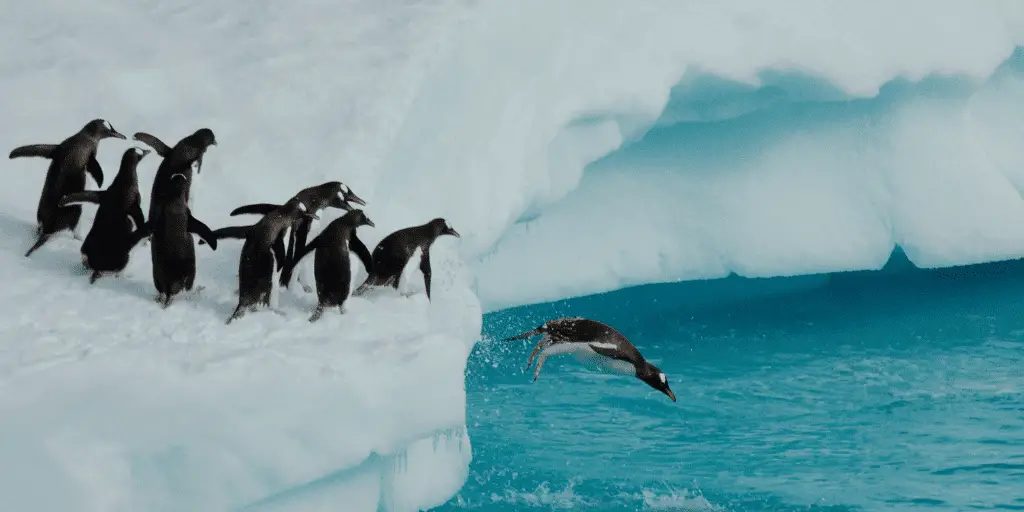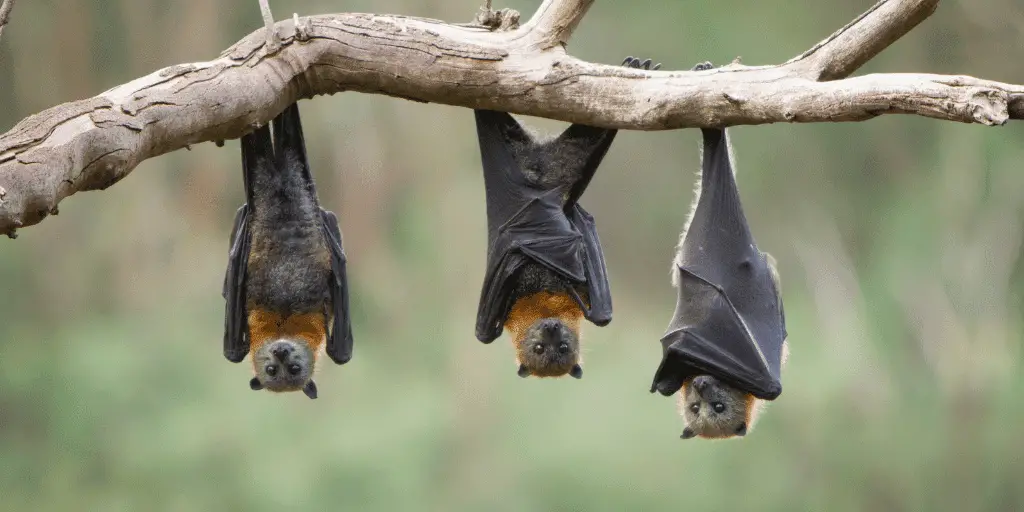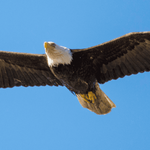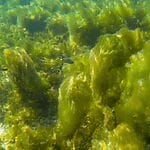Discover the astonishing world of winged animals. Uncover the vital roles these creatures play in our ecosystems, from pollination to pest control. Learn about the challenges they face, from habitat loss to climate change, and the conservation efforts that are crucial for their survival.
Let’s dive into a realm where evolution has crafted the extraordinary ability to soar, glide, and flutter across the skies.
Key Takeaways:
- Birds, such as albatrosses, eagles, and hummingbirds, exhibit a wide range of flight adaptations and play critical roles in ecosystems as pollinators, predators, and seed dispersers. They face threats like habitat loss and pollution, necessitating international conservation efforts.
- Bats are the only mammals capable of sustained flight, serving as key pollinators, seed dispersers, and pest controllers. They are threatened by diseases like white-nose syndrome and habitat destruction, highlighting the need for protective measures for roosting sites and reduced pesticide use.
- Certain reptiles, like the flying dragons, have evolved the ability to glide using skin flaps stretched over elongated ribs, allowing them to move between trees in their Southeast Asian forest habitats. Conservation of these forests is crucial for their survival amid deforestation threats.
- Insects, including butterflies, moths, bees, and dragonflies, are essential for pollination, pest control, and as indicators of environmental health. They face challenges from habitat destruction, climate change, and pesticides, prompting actions to create insect-friendly habitats and reduce pollution.
- Amphibians such as the Javan Gliding Frog and the Bornean Gliding Frog have developed gliding abilities to navigate the rainforest canopy. Their survival is threatened by deforestation, emphasizing the importance of rainforest conservation for maintaining biodiversity and ecosystem health.
List of Animals with Wings
Birds, bats, and insects are primary animals with wings, adapted for flight or gliding, playing key roles in ecosystems as pollinators, predators, and seed dispersers.
| Category | Species Highlight | Habitat & Behavior | Conservation Status & Efforts |
| Birds | Albatross, Eagles, Hummingbirds | From oceans to dense forests, adapted for flight, migration, pollination | Threatened by pollution, habitat destruction; efforts include ACAP, habitat preservation, education programs |
| Mammals (Flying) | Bats, Flying Squirrels, Colugos | Bats: only flying mammals, crucial pollinators; Squirrels & Colugos: gliding mammals | Bats face white-nose syndrome, habitat loss; conservation of woodland areas for squirrels and colugos |
| Reptiles | Flying Dragons (e.g., Draco Volans) | Tropical forests of Southeast Asia, gliding with skin stretched over ribs | Threatened by deforestation; efforts to preserve tropical forest habitats |
| Insects | Butterflies, Moths, Bees | Pollinators, decomposers, food for others; indicate environmental health | Habitat loss, climate change, pesticides; initiatives to create insect-friendly environments |
| Amphibians | Flying Frogs (e.g., Javan Gliding Frog) | Rainforests, gliding with webbed feet and skin flaps | Deforestation, habitat loss; rainforest conservation critical for survival |
1. Birds

Birds are the epitome of aerial adaptability, showcasing a breathtaking diversity that spans across the globe. From the vastness of the oceans to the seclusion of dense forests, these winged creatures have conquered a variety of habitats. They are not just masters of the sky; they play crucial roles in ecosystems as pollinators, predators, and seed dispersers.
Their ability to fly is a marvel of evolution, involving intricate adaptations that have fascinated scientists and bird enthusiasts alike. Migration patterns of birds are a testament to their endurance and navigational skills, often traveling thousands of miles to breed or escape the cold. In this segment, we’ll dive into the world of birds, examining the unique characteristics, behaviors, diets, and conservation status of different bird categories.
Albatross: Wandering Albatross, Black-browed Albatross
The albatross, with its massive wingspan, is a symbol of the open sea. These birds are equipped with specialized wing muscles that allow them to glide effortlessly over the ocean for hours, even days, without flapping their wings—a technique known as dynamic soaring.
The wandering albatross, in particular, boasts the largest wingspan of any bird, enabling it to travel vast distances. Life at sea involves feeding on squid and fish, but these majestic birds face significant threats such as plastic pollution and becoming bycatch in fishing gear.
Conservation efforts, including international agreements like the Agreement on the Conservation of Albatrosses and Petrels (ACAP), are crucial in ensuring the survival of these oceanic voyagers.
Eagles: Harpy Eagle, Steller’s Sea Eagle
Eagles are the embodiment of strength and precision. As top predators, they play a vital role in maintaining the balance of their ecosystems. The harpy eagle, with its powerful talons, and the Steller’s sea eagle, with its impressive size, are both awe-inspiring examples.
Their keen eyesight and hunting techniques are unparalleled, allowing them to snatch up prey with remarkable accuracy. Eagles prefer nesting in high, secluded areas, which are increasingly threatened by habitat destruction and human-wildlife conflicts. Conservation measures are in place to protect these majestic birds, including habitat preservation and education programs to reduce conflicts.
Hummingbirds: Broad-tailed Hummingbird, Violet-crowned Hummingbird
Hummingbirds are nature’s vibrant jewels, capable of hovering in mid-air thanks to their rapid wing beats and unique physiology. These tiny powerhouses can even fly backward, a feat unmatched in the bird world. Their role in pollination is critical, as they feed on high-calorie nectar to sustain their energetic lifestyle.
Some species embark on remarkable migration journeys, traversing long distances to reach their breeding or wintering grounds. However, habitat loss and climate change pose significant threats to their survival, making conservation efforts imperative.
Owls: Great Horned Owl, Eurasian Eagle-Owl
Owls are the silent hunters of the night, with their nocturnal habits and silent flight making them fascinating subjects of study. Their distinctive calls echo through the darkness, serving as communication and territorial markers. Owls’ adaptations for night vision are remarkable, allowing them to spot prey in low-light conditions.
They play a crucial role in controlling rodent populations, but face challenges such as habitat destruction and secondary poisoning from rodenticides. Conservation initiatives focus on protecting their habitats and reducing the use of harmful chemicals.
Parrots: Cockatoo, Kea, Sun Parakeet
Parrots are known for their intelligence, social behavior, and stunning plumage. Their diet consists of a variety of fruits, seeds, and nuts, and their ability to mimic sounds is unparalleled.
Unfortunately, the pet trade and habitat loss are significant threats to parrot populations. Conservation efforts, including habitat protection and regulations on the pet trade, are vital for the survival of these charismatic birds.
Penguins: King Penguin, Galapagos Penguin

Penguins are the charming inhabitants of some of the planet’s most extreme environments. Adapted for life in the water, their swimming abilities are extraordinary. They form large breeding colonies, and their diet primarily consists of fish and krill.
Climate change, particularly its impact on their food sources, poses a significant threat to penguin populations. Conservation efforts, including the establishment of protected areas, are essential for their continued survival.
Swans: Black Swan, Whooper Swan
Swans are the epitome of grace and beauty, with their long necks and elegant flight captivating onlookers. They migrate across continents, with habitats ranging from small ponds to expansive lakes.
Their diet is mainly composed of aquatic vegetation, but they face threats from habitat loss and pollution. Conservation efforts are focused on preserving their natural habitats and ensuring clean waterways.
Finches: Zebra Finch, Gouldian Finch
Finches are small birds with vibrant colors and melodious songs. They are social creatures, often seen in flocks, and their diet consists mainly of seeds. Finches have been instrumental in studies on evolution and genetics, with species like the Gouldian Finch being closely monitored due to their conservation status. Protecting their habitats is crucial for their survival.
Hawks: Red-tailed Hawk, Cooper’s Hawk
Hawks are adaptable birds, thriving in a variety of environments and serving as important predators in their ecosystems. Their diet includes small mammals and birds, and they exhibit fascinating migration patterns.
However, habitat destruction poses a threat to their nesting sites. Conservation efforts aim to protect these sites and ensure the hawks’ continued presence in diverse habitats.
Flamingos: American Flamingo, Greater Flamingo
Flamingos are social birds known for their striking pink coloration and unique feeding habits. They inhabit shallow lakes and lagoons, where they filter-feed on small organisms.
Breeding behaviors are complex and fascinating, but habitat loss and pollution are significant threats. Conservation measures are in place to protect their habitats and ensure the health of flamingo populations.
Woodpeckers: Downy Woodpecker, Pileated Woodpecker
Woodpeckers play a vital ecological role in forests, with their ability to excavate tree cavities and their specialized feeding habits. They primarily feed on insects and are important for controlling pest populations.
The conservation of old-growth forests is essential for the survival of woodpecker species, as these habitats provide the necessary resources for their survival.
Robins: American Robin, European Robin
Robins are familiar sights in gardens and woodlands, with their cheerful songs heralding the arrival of spring. Their diet consists of worms and fruits, and they exhibit interesting nesting habits and migration patterns. Pesticide use can have a detrimental impact on their populations, highlighting the need for careful management of chemicals in their habitats.
Sparrows: House Sparrow, Eurasian Tree Sparrow
Sparrows have successfully adapted to urban environments, feeding on seeds and insects. Their social behavior is a common sight in cities, but urbanization has led to the decline of some sparrow populations. Creating green spaces in urban areas is one of the efforts to support their habitats and ensure their survival.
Toucans: Keel-billed Toucan, Toco Toucan
Toucans are instantly recognizable by their large bills and vibrant colors. They play a key role as seed dispersers in forest ecosystems, with their diet consisting mainly of fruits. Habitat destruction and the pet trade are threats to toucan populations, making conservation efforts critical for their protection.
2. Mammals

This section will explore the fascinating world of mammals that have developed the ability to glide or fly. It will cover their evolutionary adaptations, the ecological niches they occupy, and the conservation efforts to protect these unique species.
Each sub-section will delve into the habits, habitats, and diets of specific mammals, highlighting their importance in biodiversity and ecosystem health.
Bats: Vampire Bat, Spectacled Flying Fox, Greater Horseshoe Bat, Indiana Bat
Bats are the only mammals capable of sustained flight, and they play vital roles in our ecosystems. The vampire bat, with its infamous diet of blood, is actually a keystone species in its environment, helping to control the population of its prey.
Meanwhile, the spectacled flying fox is a crucial pollinator and seed disperser, particularly for forest trees. The greater horseshoe bat and the Indiana bat, with their insectivorous appetites, are natural pest controllers.
Despite their importance, bats face significant threats. White-nose syndrome, a fungal disease, has decimated populations, particularly in North America. Habitat loss due to human encroachment is another critical issue. Conservation efforts, such as protecting roosting sites and reducing pesticide use, are essential to ensure the survival of these winged wonders.
Flying Squirrels: Siberian Flying Squirrel, Indian Giant Flying Squirrel
Flying squirrels are enchanting nocturnal creatures that have mastered the art of gliding. They leap from tree to tree with the help of a patagium, a membrane stretching between their limbs. The Siberian flying squirrel and the Indian giant flying squirrel have a diet that includes nuts, seeds, and occasionally insects, which they forage for at night.
Their habitats, however, are under threat from deforestation, which not only deprives them of their homes but also of the very trees they glide between. Conservation efforts focus on preserving and managing woodland areas to maintain the delicate balance these squirrels need to thrive.
Colugos: Malayan Colugo (Sunda Flying Lemur)
Colugos are among the most specialized gliding mammals. The Malayan colugo, often called the Sunda flying lemur, is not a lemur and does not fly in the true sense. Instead, it glides with remarkable efficiency thanks to its extensive gliding membrane. This adaptation allows it to soar from tree to tree in its Southeast Asian forest habitat, covering impressive distances in a single glide.
Colugos primarily feed on leaves, shoots, and flowers, playing a significant role in their ecosystem. However, they are threatened by habitat destruction and fragmentation due to human activities. Protecting the forests of Southeast Asia is crucial for the survival of these unique gliders, as they depend on large, contiguous tracts of woodland to live and reproduce.
3. Reptiles
In the diverse tapestry of the animal kingdom, certain reptiles have taken to the skies, not with wings, but with an extraordinary ability to glide. These creatures, often referred to as flying dragons, are a testament to nature’s ingenuity.
Their unique adaptations allow them to soar from tree to tree, evading predators and traversing their leafy realms with ease.
In this section, we’ll explore the world of these remarkable reptiles, examining their preferred habitats, what they eat, and the incredible physical traits that facilitate their aerial escapades. We’ll also consider the evolutionary implications of these adaptations and the current conservation status of these species, which face mounting ecological pressures.
Flying Dragons: Draco Volans, Draco Bimaculatus, Draco Maculatus, Draco Sumatranus
Imagine a small lizard, no larger than a pencil, launching itself into the air and gliding gracefully between the trees. This is the daily reality for the flying dragons, a group of lizards with species such as Draco volans, Draco bimaculatus, Draco maculatus, and Draco sumatranus.
These lizards possess an astonishing adaptation: folds of skin stretched over elongated ribs that can fan out to create “wings,” allowing them to glide for distances of up to 60 feet. This is not true flight like that of birds or bats, but it is an impressive feat nonetheless.
Flying dragons make their home in the tropical forests of Southeast Asia, where the dense canopy provides both the verticality necessary for gliding and a rich source of their primary diet—insects.
These lizards are arboreal, spending most of their lives in the trees, and are highly territorial. A male flying dragon will fiercely defend his patch of foliage, which not only offers him a bounty of food but also a vantage point from which to spot potential mates.
The survival of these lizards is intricately linked to the health of their forest habitats. As deforestation and habitat destruction continue to pose significant threats in regions like Southeast Asia, the future of flying dragons hangs in the balance.
Protecting these forests is not just about preserving the beauty of nature; it’s about safeguarding the intricate ecological networks that species like Draco volans and its relatives depend on.
Conservation efforts must prioritize the maintenance of these tropical havens to ensure that the spectacle of a flying dragon, gliding from tree to tree, remains a reality and not just a memory.
4. Insects

The world of winged insects is as vast as it is vital. These creatures, often overlooked or swatted away, are in fact pillars of our ecosystems. From the fluttering dance of butterflies to the ceaseless toil of bees, each insect with wings plays a crucial role in the tapestry of life.
They are pollinators, decomposers, and a food source for other animals. Their presence indicates the health of our environment, and their decline signals a need for concern and action. Let’s delve into the lives of these fascinating beings and understand the challenges they face in our ever-changing world.
Butterflies: Blue Morpho, Swallowtail Butterfly
Butterflies are the artists of the insect world, painting our gardens with their vibrant wings. The Blue Morpho, with its iridescent blue wings, and the Swallowtail, with its distinctive tail, are just two examples of this group’s incredible diversity. Their journey from caterpillar to adult is one of nature’s most remarkable metamorphoses, a process that is essential for pollination.
Yet, these delicate creatures are under threat from habitat loss, climate change, and pesticides. Efforts to create butterfly-friendly environments are crucial, whether it’s through planting native flowers or supporting conservation initiatives.
Moths: Luna Moth, Hawk Moth
Moths, the nocturnal cousins of butterflies, are equally important to the ecosystem. The Luna Moth, with its pale green wings, and the Hawk Moth, known for its hovering flight, are among the many species that contribute to pollination and serve as prey.
However, they face challenges such as light pollution and habitat destruction. Initiatives to preserve dark skies and natural habitats are vital to their survival and the broader health of our ecosystems.
Bees: Carpenter Bee, Africanized Bee
Bees are the workhorses of pollination, with species like the solitary Carpenter Bee and the more aggressive Africanized Bee playing pivotal roles. Their social behavior and hive dynamics are fascinating, yet they face dire threats from pesticides, disease, and habitat loss.
Protecting native bee populations and supporting their health through sustainable practices is not just beneficial for bees; it’s essential for our own survival, as they pollinate the crops we rely on.
Dragonflies: Blue Dasher, Green Darner
Dragonflies, such as the Blue Dasher and Green Darner, are awe-inspiring flyers, capable of acrobatic feats in the air. They serve as important predators of insect pests and are indicators of wetland health. Their life cycle, which begins in water, is under threat from pollution and climate change. Protecting their aquatic habitats is crucial for maintaining the balance of these ecosystems.
Grasshoppers: American Grasshopper, Red-legged Grasshopper
Grasshoppers, including the American Grasshopper and Red-legged Grasshopper, play a role in grassland ecosystems as plant consumers. They can both jump and fly, albeit for short distances. Locust swarms can pose significant challenges to agriculture, highlighting the need for sustainable land management and the importance of maintaining ecological balance with natural predators.
Ladybugs: Seven-spot Ladybug, Convergent Lady Beetle
Ladybugs, like the Seven-spot Ladybug and Convergent Lady Beetle, are natural pest controllers, preying on aphids and other plant-eating insects. Their life cycle and bright colors are fascinating, but they face threats from habitat loss and the introduction of non-native species. Encouraging natural pest control is essential for both garden health and agricultural productivity.
Beetles: Hercules Beetle, Firefly
Beetles boast an incredible diversity, with roles ranging from decomposers to pollinators. The Hercules Beetle, known for its strength, and the Firefly, with its enchanting light, are just two examples of this group’s uniqueness. However, they face conservation concerns due to habitat destruction and climate change, making the protection of their environments a priority.
Ants: Flying Ants (various species during nuptial flight)
The nuptial flight of ants is a spectacular event where winged males and queens take to the skies to mate and establish new colonies. Ants are crucial for soil aeration, seed dispersal, and as a food source. Yet, they are not immune to challenges such as habitat disruption and the spread of invasive species, which can disrupt local ecosystems.
Wasps: Yellow Jacket, Paper Wasp
Wasps, including the Yellow Jacket and Paper Wasp, are often misunderstood, yet they play a significant role in pest control and pollination. Their social structure and nesting habits are complex, and understanding the balance between wasp management and ecosystem health is key to coexisting with these important insects.
5. Amphibians
Amphibians are a fascinating group of animals that have conquered both land and water. But did you know that some have also taken to the skies? Well, not quite flying, but gliding with a grace that would make any bird envious.
These unique creatures have evolved remarkable adaptations that allow them to soar from tree to tree, and they’re known as flying frogs. Their habitats are as enchanting as their aerial abilities, nestled in the lush rainforests where the canopy is alive with the buzz of insects – their primary diet.
The physical adaptations of these amphibians are nothing short of extraordinary, with skin flaps and webbed feet that enable their gliding prowess. However, their existence is under threat, primarily due to the destruction of their rainforest homes.
The conservation status of these amphibians is a growing concern, and it’s crucial to understand the importance of preserving their habitats not only for their survival but for the maintenance of rainforest biodiversity.
Flying Frogs: Javan Gliding Frog, Bornean Gliding Frog
Imagine a creature that can leap into the air and then glide smoothly to a neighboring tree. This is the reality for the Javan Gliding Frog and the Bornean Gliding Frog. These amphibians have turned their bodies into parachutes, using their large webbed feet and skin flaps to catch the air and glide distances of over 15 meters.
The rainforest is their playground and their sanctuary, providing them with the vertical space needed to showcase their gliding abilities.
Their diet consists mainly of insects, which are abundant in their rainforest habitat. These frogs are also known for their interesting breeding behavior, where they lay their eggs in foam nests above water bodies, ensuring their offspring are safe from aquatic predators until they hatch and drop into the water below.
However, the very trees that provide them with life are being cut down at an alarming rate. Deforestation and habitat loss are the main threats to these incredible gliders. The loss of rainforests not only means a loss of home for these frogs but also a significant reduction in the biodiversity that these ecosystems support.
Rainforest conservation is thus not just about saving trees, but about protecting a complex web of life that includes these remarkable flying frogs. Their survival is intricately linked to the health of their environment, and efforts to preserve their habitats are vital for their continued existence and the well-being of countless other species that share their home.
Conclusion
In conclusion, the animal kingdom boasts an incredible array of winged species, from the soaring albatross to the gliding colugo. Birds, with their diverse adaptations, dominate the skies, fulfilling essential roles in ecosystems as pollinators, predators, and seed dispersers.
Mammals like bats and flying squirrels showcase evolutionary ingenuity, while reptiles such as flying dragons reveal the versatility of nature’s designs. Insects, the unsung heroes of our environment, are critical pollinators and pest controllers, and amphibians like flying frogs astonish with their aerial abilities.
However, these winged wonders face numerous threats, including habitat loss, climate change, and pollution. Conservation efforts are imperative to protect these species and the vital roles they play in maintaining ecological balance. The preservation of their habitats is not only crucial for their survival but also for the health of our planet’s diverse ecosystems.








